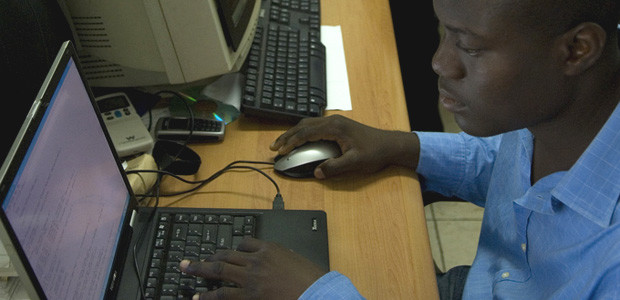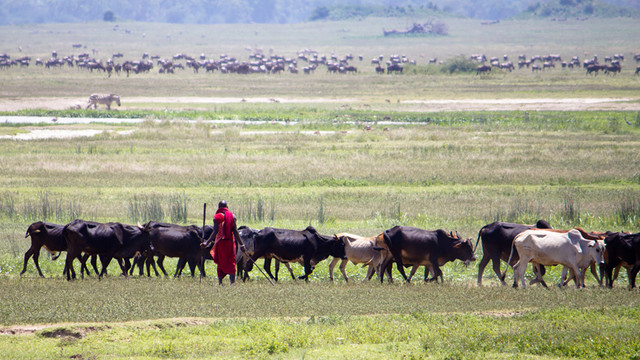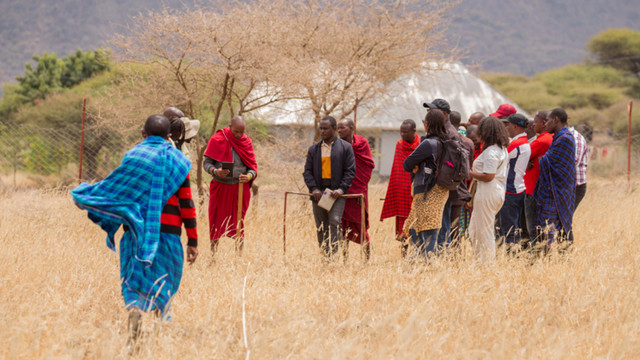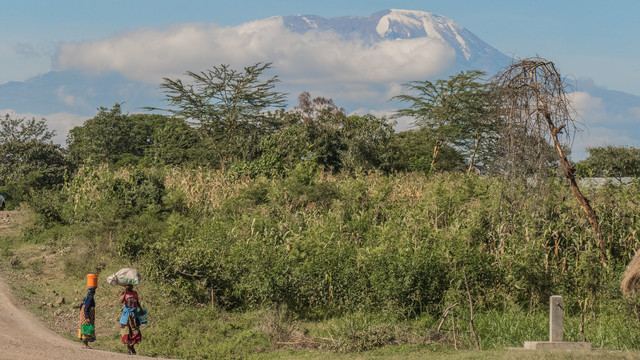Virtual conferences: not in the future, but now
In this digitally connected world, could virtual participants meaningfully follow and take part in an IIED conference, cutting carbon footprints and expense?


Will we all be virtual participants by 2020? Photo: World Bank photo
Last year at a conference I met a project manager and mum who said that she and many of her colleagues were increasingly opting out of attending conferences. Worried about her carbon footprint, the expense of flights and accommodation and being away from her family, she felt conferences didn’t always justify the expense and extra exhaust fumes. And for many people, attending an international conference is financially impossible.
Generating evidence through hands-on research with grassroots partners is one of IIED’s key aims. Helping participants get inside conference rooms where knowledge is being shared, and helping them actively participate in proceedings by asking questions or leaving comments is an important part of that work.
This year at CBA7 the web team at IIED used a number of different technologies to do just that. We used Scribble Live, also used by a number of news agencies, including Reuters, CNN and the Press Association, to report live from the conference.
Once up and running, it allowed participants (both those at the conference and also ‘virtual’ online ones) to:
- read curated content on the live blog, including comments and social media postings that participants had published on social media accounts and which were then pulled through onto the live blog page
- live ‘report’ from the event (through comments and social media content)
- leave comments – for instance, by watching the live web cast and then asking questions online.
How we did it
The live pages were actually running on the Scribble live site, so we needed to make alterations to make the pages conform to the IIED site design. The web team adapted some of the style sheet (CSS) settings on the Scribble live template, changing fonts, font sizes and colours, so that it sat seamlessly when embedded within the IIED website. And we embedded the live blogging technology onto our website to ensure that we generated traffic on our site.
All the content posted by participants ‘pulled through’ onto a dashboard, and was checked before it was posted live to ensure no defamatory comments or spam ended up on the live blog.
The result
Was the hard work worth it? The online statistics suggests it was. We had 203 comments on the live blog. This means that during the four day conference 203 people bothered to log in and participate in the discussion, which shows a high level of interest.
Overall we had 3,568 unique page views on our CBA7 web pages (including the live blog and the highlights pages) from 21 – 29 April 2013. If we include the CBA-related blogs and press releases in total the figure is 4,367 unique page views for this time period. This is an impressive achievement for eight days.
Likely a two-hour online debate on how the poorest can act to adapt, hosted by IIED and AlertNet Climate and held a few weeks before the event, helped drive online traffic and interest in the conference. According to AlertNet Climate, that chat alone had 832 unique visitors, 80 of whom posted comments themselves. At least some of those participants likely followed CBA7 virtually. Read a storify summary of the AlertNet Climate chat.
Viewer figures were higher on the first day and then progressively tailed off on the following days. We can only guess why, but generally the live blogging model works best in short and sharp bursts – and it’s harder to maintain momentum over a four day period.
Teething problems
We produced a web page with highlights from the live blog each day, including social media, comments and web link highlights from the day. The first day I tried to use Scribble live to do this, but found that it only pulled through the first day of social media data. On contacting Scribble live, they said this was a bug they were addressing. So, my experience was that this functionality is still in its infancy. I switched to using Storify, which is built to curate user generated content on the last three days. Read the online highlights from Day 1, Day 2, Day 3 and Day 4.
Given the number of comments we received, we were under-resourced to respond to all the virtual participants in a timely and meaningful way. Many comments were quite technical in nature, and required responses from researchers. We will need to think this through in more detail before the next ‘virtual’ event.
A major obstacle that we faced in Bangladesh was connectivity. It often dropped out in the main conference hall, which meant that at times the live web cast stopped working for virtual participants and that we couldn’t live report on the conference. Many of the hotel conference rooms, where side events were being held, didn’t have wifi. All of this no doubt had an impact on people’s social media and web participation, as most people couldn’t get onto the live blog to comment or onto social media to live tweet from the side panel sessions, or lost their connection in the main hall and gave up.
But, the figures show that, despite the obstacles, there was great interest to follow the proceedings and to take part.
Of course, there are important perks to attending conferences. Meeting someone face to face over a coffee is invariably better than communicating virtually. Most of the community-based adaptation conferences involved participants visiting communities and projects to see first-hand how communities are adapting to climate change. That kind of experience can’t be replicated online.
But this was an important first step in helping virtual participants take part. And it made me wonder: will we all be virtual participants by 2020?
Do you have any experience of managing a virtual conference - if so, what technology did you? Any lessons to share? Were you a real or virtual CBA7 participant? Do you have any suggestions on how we could improve the experience for virtual participants next year? Please get in touch and leave a comment below.


